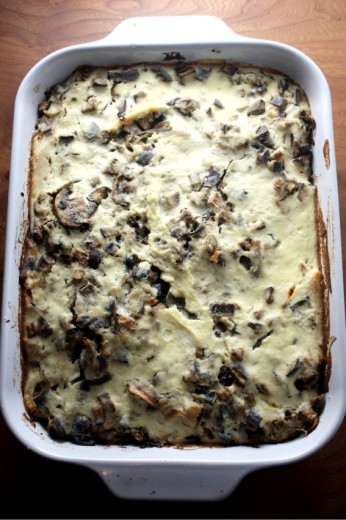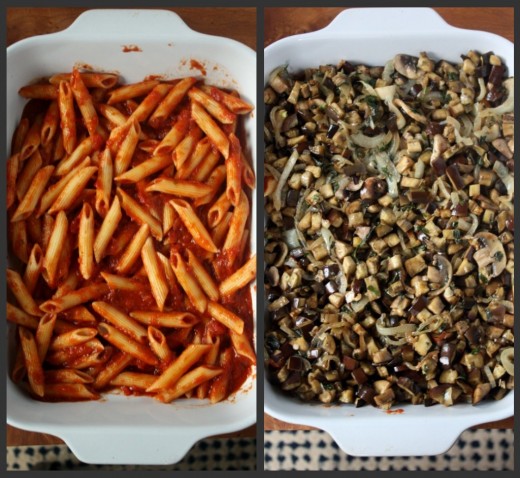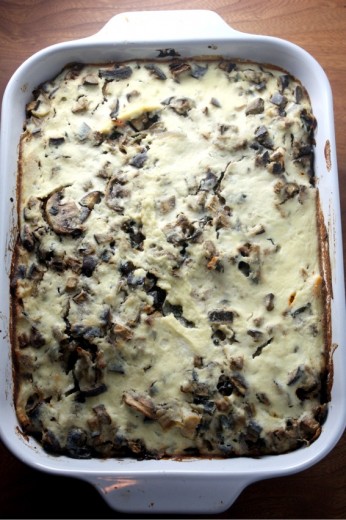I had a story prepared for today’s post. Let me summarize. I was going to talk about Pasticcio and how I was first introduced this Greek dish by the wife of one of my dad’s patients. It was 1974 – the year we spent in Springfield, Massachusetts before my parents realized they had left their hearts in Seattle. Christina Papadorcopolis was a great cook, nice lady, and an incredible maker of almost life-size dolls which my four year-old self thought were the most beautiful things in the world. She taught my mom to make Pasticcio and Moussaka and Baklava – all things that remained in my mom’s cooking repertoire throughout my childhood. I liked Moussaka (yes, as a four year old) but I liked Pasticcio better because it had pasta in it.
I was going to tell you about how we ended up in Springfield, the few memories I have from that year, etc. I often start posts in my head and yesterday, I decided to throw a load of laundry in and head up 2 blocks to get a coffee while I mulled over what to write. 20 minutes later I came home to water dripping down from the ceiling onto the stairs. I ran up to the laundry room and there was water all over the floor.
My husband was away on a business trip and I did not even know where to start, who to call. A plumber? Sears? I opted for our builder who is also a friend. I have asked him to come over to change the battery in a chirping smoke alarm (our ceilings are very high and he is very tall) so I knew he would probably be willing to help. He told me he would head over and in the meantime, I found a repairman who could come that day.
I will spare you the blow by blow but I will tell you that there was a small leak in the washing machine pump which was leaking all the water out of the drum. Enough water had accumulated in the ceiling of the main floor that a large hole had to be cut to allow it to stream out. There was a lot of soaking up water with towels, wringing towels out, crouching, running up and down stairs, and wiping, cleaning, sweeping, and mopping in the subsequent three hours. And I still made this for dinner.
I’m not telling you this for a pat on the back (although, considering this husband-less week also included a 4am trip to the Children’s hospital ER, a spa day would be nice). I’m telling you this because if I could make this dish in the midst of wringing towels and holes being cut in my ceiling, and while still recovering from a sleepless night, you can make it too.
I would imagine Pasticcio traditionally has meat just as Moussaka does. This version, courtesy of The Greens Cookbook, uses eggplant and mushrooms which are sautéed with onions, garlic, and fresh herbs. It is a super flavorful and hearty dish. The custard topping gives it a nice richness but there is not so much of it that it feels heavy. I have been making this dish for years and have tinkered with it to my taste (more pasta, less custard) and I have even, on days where there is plaster everywhere and my knees are soaked from washing machine water, used a bottled sauce.
One Year Ago: Holly B’s Cinnamon Rolls
Two Years Ago: Marinated Chickpea Salad with Radishes and Cucumbers
Eggplant and Mushroom Pasticcio
Adapted from The Greens Cookbook
Serves 6-8 generously
3 cups of your favorite tomato sauce
Olive oil
1½ pounds eggplant, cut into ½-inch cubes
Kosher salt and freshly ground black pepper
1 yellow onion, thinly sliced
3 cloves garlic, finely chopped
¼ cup fresh basil, finely chopped
2 tbsp. fresh marjoram, finely chopped
4 ounces mushrooms, sliced
8 ounces penne pasta, or other tubular shape
1 cup ricotta cheese
2 eggs, beaten
¾ cup half-and-half
4 ounces freshly grated Parmesan cheese
Place a large skillet over medium heat. Add just enough olive oil to coat the bottom of the pan and add the eggplant along with a large pinch of salt. Cook for 8 to 10 minutes, until the eggplant is soft and starting to brown in places. Toss frequently so it doesn’t stick. Remove to a bowl.
Drizzle in more olive oil and then add the onions and a large pinch of salt. Cook over medium heat until soft, about 6 minutes. Add the garlic and herbs, cook for 2 minutes, then add the mushrooms. Raise the heat and cook until the mushrooms have browned and released their juices. Add these to the eggplant and season with salt and freshly ground black pepper.
Bring a large pot of salted water to a boil. Add the pasta and cook until just shy of al dente (it will continue to soften while in the oven). Drain it in a colander and rinse with cold water to stop the cooking. Return to the pot and stir in ¾ of the tomato sauce.
Combine the ricotta, eggs, and half-and-half in a small bowl. Add a quarter of the Parmesan and season with salt and pepper.
Use a 3 quart casserole (a 13-by-9 inch pan works well here). Preheat the oven to 350ºF. Spread the remaining bit of sauce on the bottom of the pan. Layer the noodles over the sauce, cover them with the eggplant mixture, and dust with the remaining Parmesan. Pour the ricotta custard over the top, spreading it gently over the surface so that it is covered. (At this point the dish can be made up to 6 hours ahead. Cover with foil and refrigerate.)
Bake, uncovered, for 25 to 30 minutes, or until the custard has set and turned a golden brown around the edges. Add another five minutes to the cooking time if it the Pasticcio has been refrigerated. Allow the dish to settle for a few minutes before serving.





 Share
Share



